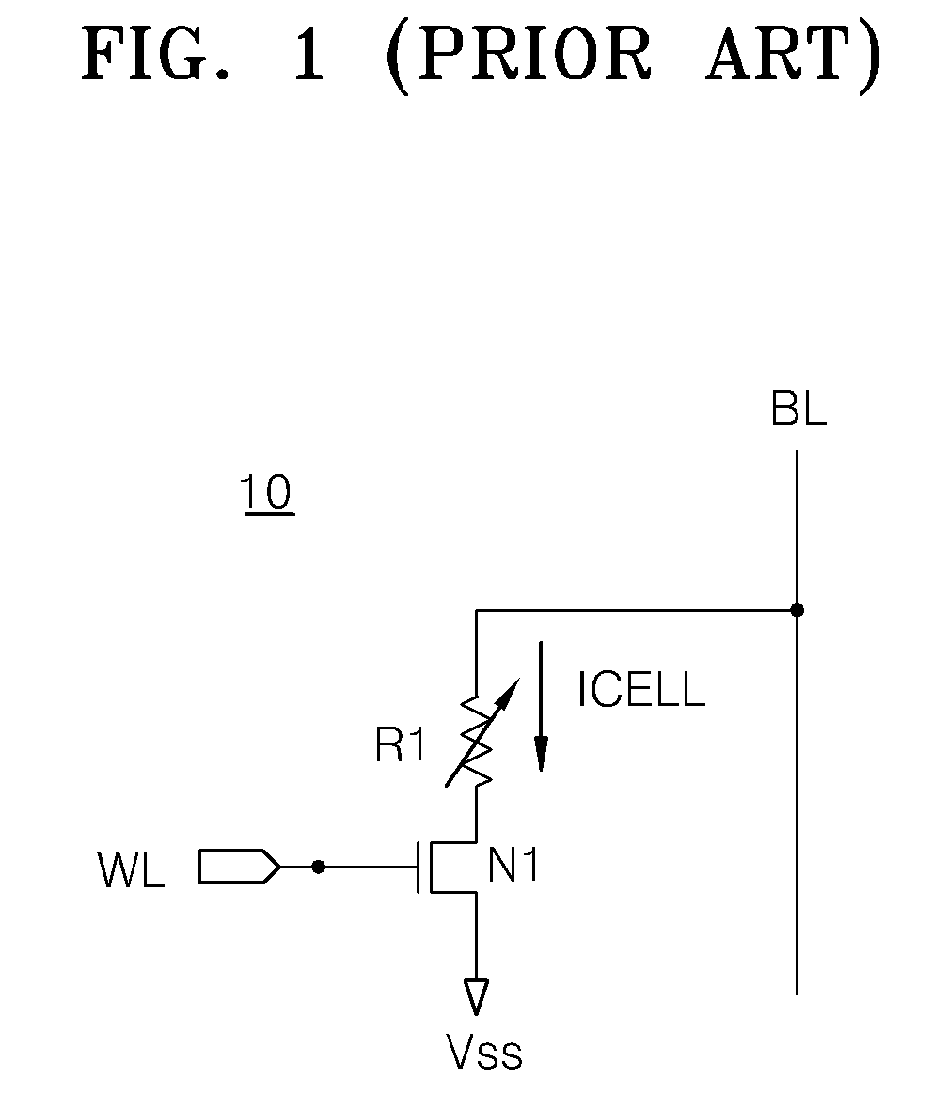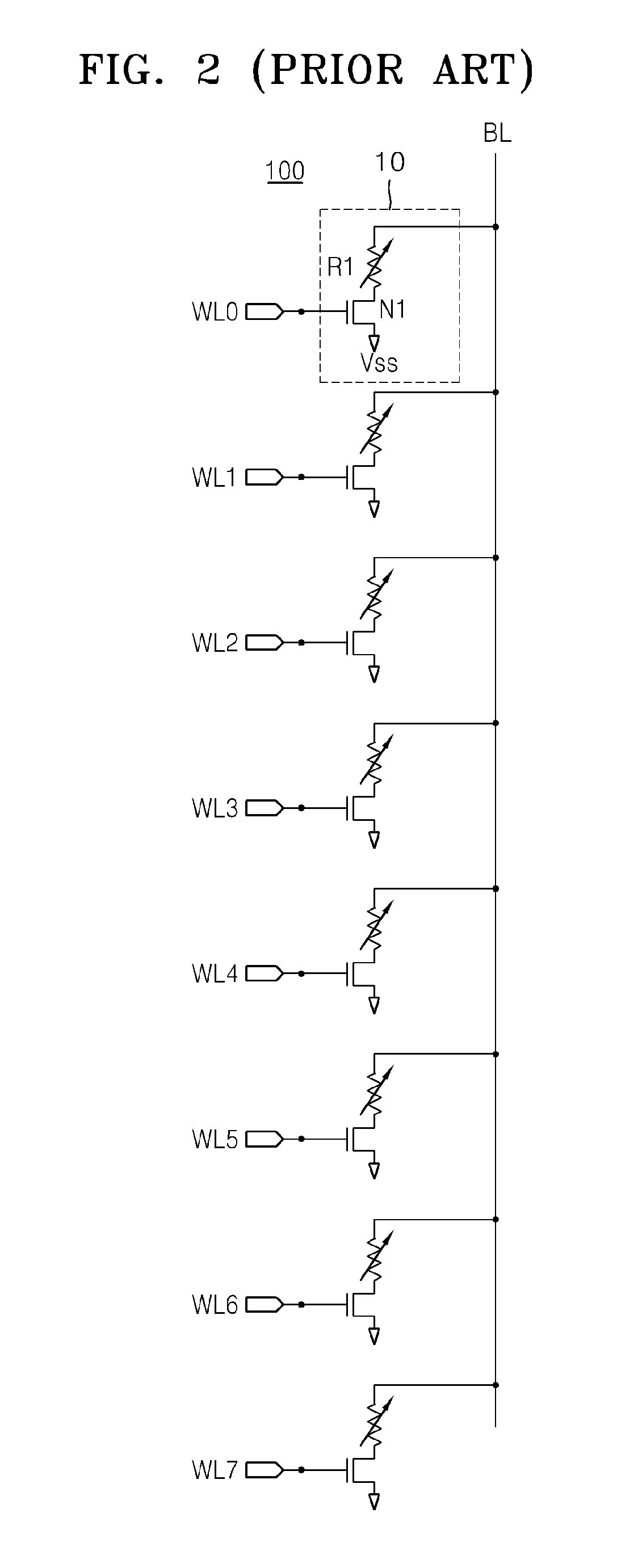Semiconductor memory device with stacked memory cell and method of manufacturing the stacked memory cell
a memory cell and semiconductor technology, applied in semiconductor devices, digital storage, instruments, etc., can solve problems such as the increase of the integration density of the pram
- Summary
- Abstract
- Description
- Claims
- Application Information
AI Technical Summary
Benefits of technology
Problems solved by technology
Method used
Image
Examples
Embodiment Construction
[0085]Hereinafter, exemplary embodiments of the present invention will be described in detail with reference to the accompanying drawings. Like reference numerals are used to designate like or equivalent elements throughout this disclosure.
[0086]A cell structure of a semiconductor memory device according to an embodiment of the present invention will now be described with reference to FIGS. 3 and 4. In this embodiment, the semiconductor memory device indicates a phase-change random access memory (PRAM) formed of a phase-change material.
[0087]Referring to FIG. 3A, a phase-change memory cell 30 includes first and second control transistors N31 and N32 on different layers, and a variable resistance device R3 formed of a phase-change material.
[0088]Gates of the first and second control transistors N31 and N32 are connected to a word line WL. A first terminal of each of the first and second control transistors N31 and N32 is connected to a reference voltage, e.g., a ground voltage Vss.
[0...
PUM
 Login to View More
Login to View More Abstract
Description
Claims
Application Information
 Login to View More
Login to View More - R&D
- Intellectual Property
- Life Sciences
- Materials
- Tech Scout
- Unparalleled Data Quality
- Higher Quality Content
- 60% Fewer Hallucinations
Browse by: Latest US Patents, China's latest patents, Technical Efficacy Thesaurus, Application Domain, Technology Topic, Popular Technical Reports.
© 2025 PatSnap. All rights reserved.Legal|Privacy policy|Modern Slavery Act Transparency Statement|Sitemap|About US| Contact US: help@patsnap.com



